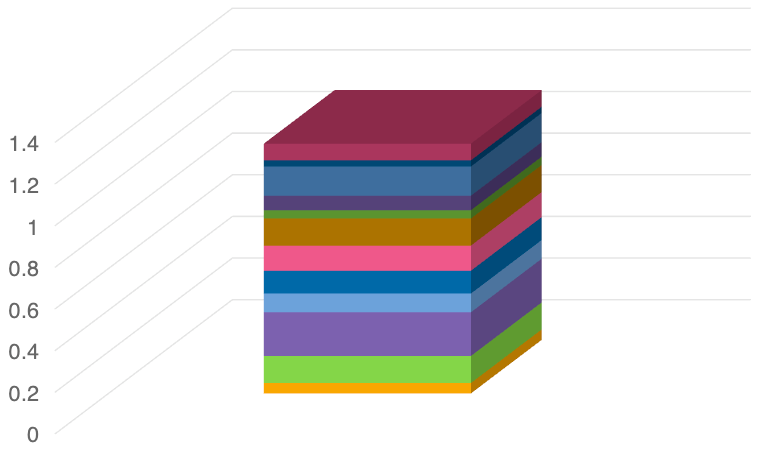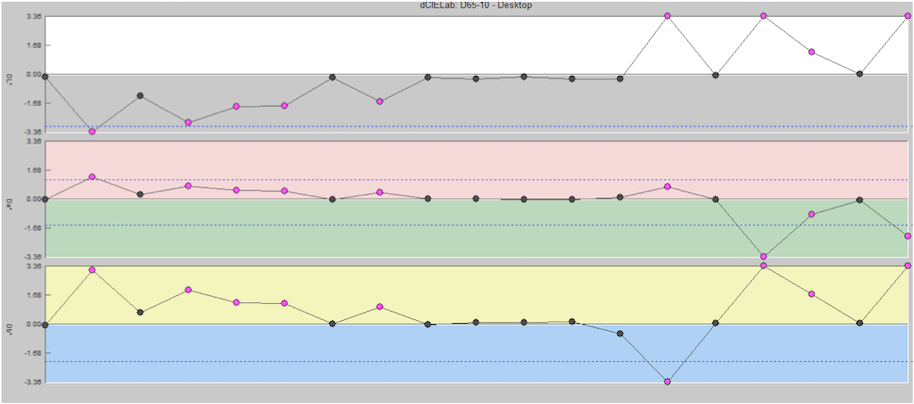Your customer rejected your latest shipment due to color.
You checked the color before you sent it and it passed tolerance…
You did everything the same way last time and it passed tolerance…
So why did it get rejected now?
We get this question from our customers all the time.

The Dreaded “Error Stack”
Color rejections create waste and increase production costs. Unfortunately, there are a lot of variables that contribute to the color you produce, and each has its own impact. When you total them all together, you start to compile the dreaded “error stack,” moving farther away from accurate color.
Here’s how it works.
Luckily there are things you can do before and during production to minimize this potential error stack.
Ways to Control Color BEFORE Production
Controlling as many variables as possible prior to production can greatly reduce color rejections because these are the variables that cost you the most money. There are a few key things you can focus on to minimize the risk of errors.
1 - Ensure everyone is using the same standard.
People are usually good about this at the beginning, but you should periodically validate everyone is using the same standard.
2 - Ensure your instruments are in good working order.
There are two ways to do this – send your instrument back to X-Rite for certification (or re-certification) or use NetProfiler to verify performance and bring it back if it starts to drift.
3 - Document all measurement procedures.
Here’s a list of things you should document and monitor:
- Instrument Geometry, such as sphere or 45:0?
- Illuminant and Observer
- Aperture size
- Color Space (LAB, LCH?)
- Tolerance
- Modes (for a sphere, SCI or SCE? For a 45:0, which M mode are you using?)
- Location and orientation
- Number of averaged measurements
- Sample presentation
- Backing material
- The environment, including temperature and humidity
- Age of the sample
4 - Always test your incoming raw materials.
Your suppliers can have color issues, too. It’s really important to set tolerances around raw materials and test them when they come in.
Ways to Control Color DURING Production
During production, you can rely on quality control software to notify you if your color starts to drift. Of course, looking at the data won’t fix the issue, but it can help you figure out what you need to do.
1 - Identify the variables for each measurement.
This scatter plot in Color iQC shows a series of measurements. The black dots pass and the pink dots fail showing if you have significant variation between production samples.

A trend plot shows whether your failing colors are too light, too dark, too red, etc.

2 - Group or sort the data based on the variables.
You can also set up groups of criteria to identify and sort, such as the supplier, the substrate, dwell time, production machine, temperature, etc. Choose the process variations that are most important for you to assess.
Watch how it works:
3 – Assess the impact of each variable.
This is sometimes the most critical step, and often the most difficult to perform… Can you find the culprit by causing variation in the process? For example, produce a set of samples using the same material and run it under a variety of different settings. Maybe you’ll realize that a temperature increase or decreased dwell time is causing the color to shift. Understanding the impact of process variables can help you detect a trend toward bad color while you still have time to make adjustments.
Learn More in Our Free Webinar
Of course, this is just an overview. I invite you to watch our free, on-demand webinar – Reducing Color Rejections in a Manufacturing Workflow – for more detail and real-life examples. If you have color issues you can’t seem to fix, our Color Experts are happy to help. Get in touch for a consultation.
